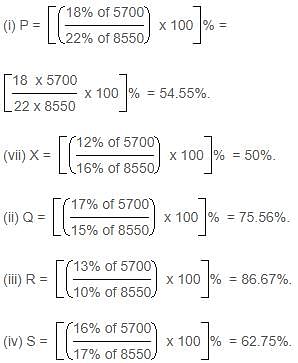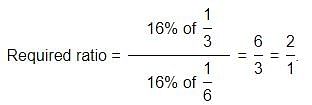Test: Pie Charts - 2 - SSC CGL MCQ
15 Questions MCQ Test Quantitative Aptitude for SSC CGL - Test: Pie Charts - 2
Study the following pie-chart and the table and answer the questions based on them.

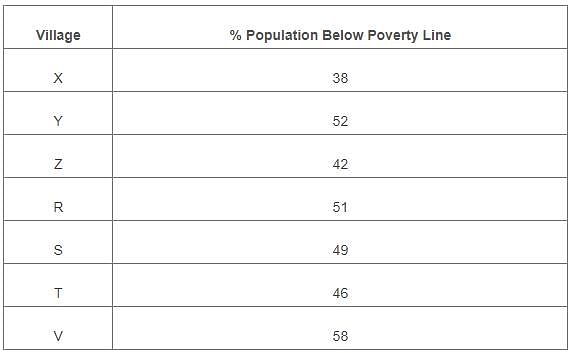
Q. If in 1999, the population of village R increase by 10% while that of village Z reduces by 5% compared to that in 1997 and the percentage of population below poverty line remains unchanged for all the villages, then find the approximate ratio of population of village R below poverty line to the ratio of population of village Z below poverty line for the year 1999.


Study the following pie-chart and the table and answer the questions based on them.


Q. If in 1998, the population of village Y and V increase by 10% each and the percentage of population below poverty line remains unchanged for all the villages, then find the population of village V below poverty line in 1998, given that the population of village Y in 1997 was 30000.


Study the following pie-chart and the table and answer the questions based on them.


Q. If the population of village R in 1997 is 32000, then what will be the population of village Y below poverty line in that year?


Study the following pie-chart and the table and answer the questions based on them.

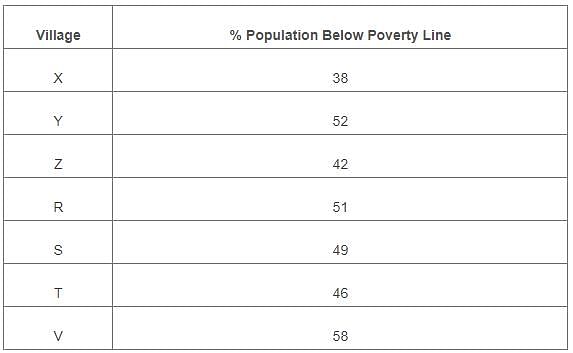
Q. The ratio of population of village T below poverty line to that of village Z below poverty line in 1997 is:
Study the following pie-chart and the table and answer the questions based on them.


Q. Find the population of village S if the population of village X below poverty line in 1997 is 12160.
Study the following graph carefully and answer the questions given below:

Q. The number of candidates passed from institute S and P together exceeds the number of candidates enrolled from institute T and R together by:
Study the following graph carefully and answer the questions given below:
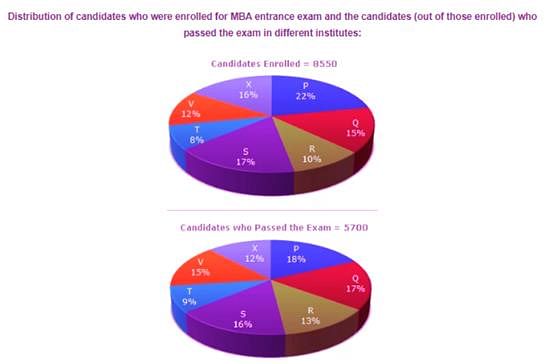
Q. What is the percentage of candidates passed to the candidates enrolled for institutes Q and R together?
Study the following graph carefully and answer the questions given below:

Q. Which institute has the highest percentage of candidates passed to the candidates enrolled?
Study the following graph carefully and answer the questions given below:

Q. What is the ratio of candidates passed to the candidates enrolled from institute P?
Study the following graph carefully and answer the questions given below:

Q. What percentage of candidates passed the Exam from institute T out of the total number of candidates enrolled from the same institute?
Study the following pie-diagrams carefully and answer the questions given below it:

Q. To show the distribution of proteins and other dry elements in the human body, the arc of the circle should subtend at the centre an angle of:
Study the following pie-diagrams carefully and answer the questions given below it:
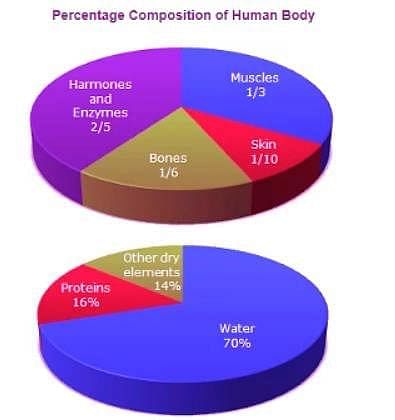
Q. What percent of the total weight of human body is equivalent to the weight of the proteins in skin in human body?
Study the following pie-diagrams carefully and answer the questions given below it:

Q. What will be the quantity of water in the body of a person weighing 50 kg?
Study the following pie-diagrams carefully and answer the questions given below it:

Q. What is the ratio of the distribution of proteins in the muscles to that of the distribution of proteins in the bones?
Study the following pie-diagrams carefully and answer the questions given below it:

Q. In the human body, what part is made of neither bones nor skin?
|
314 videos|170 docs|185 tests
|











